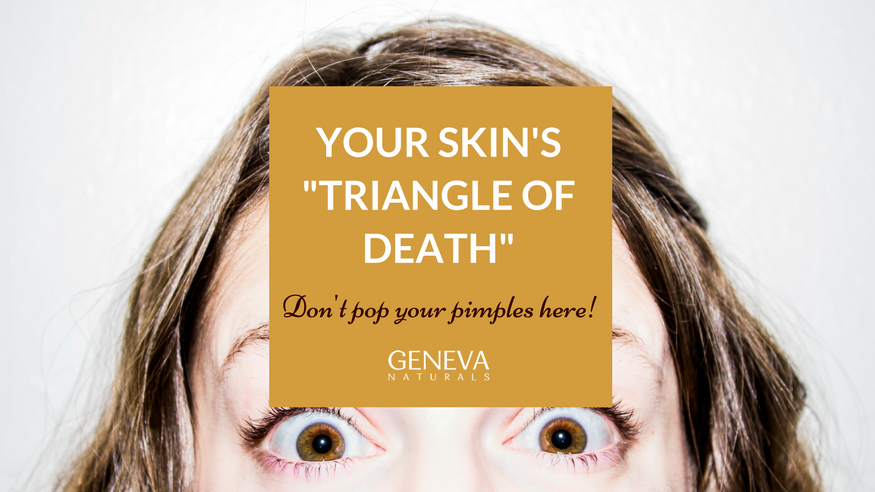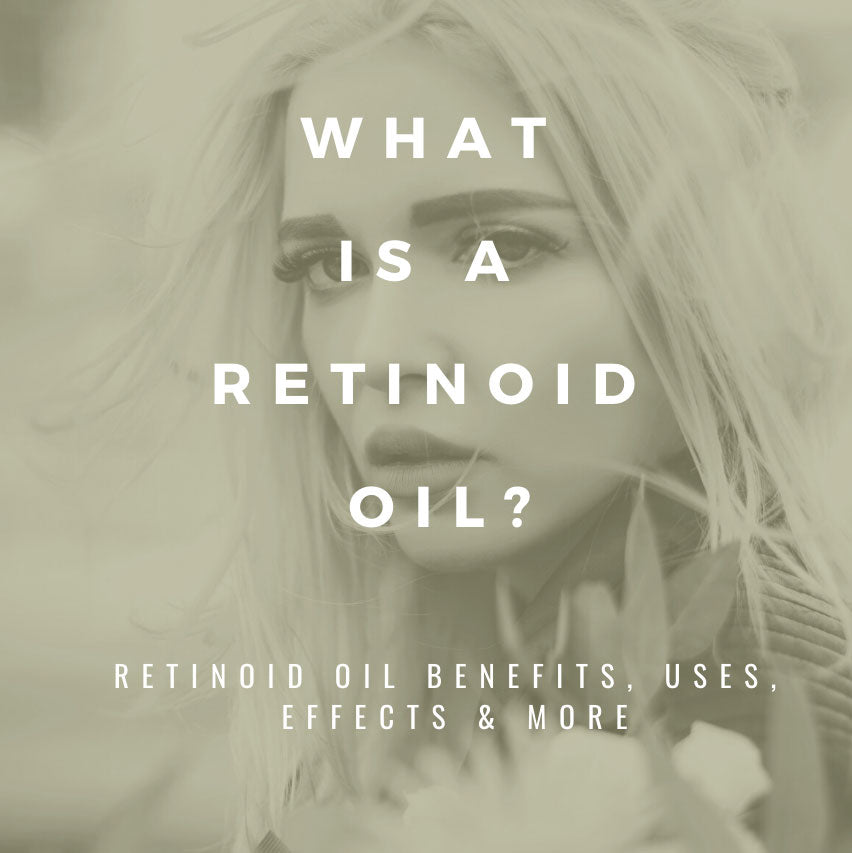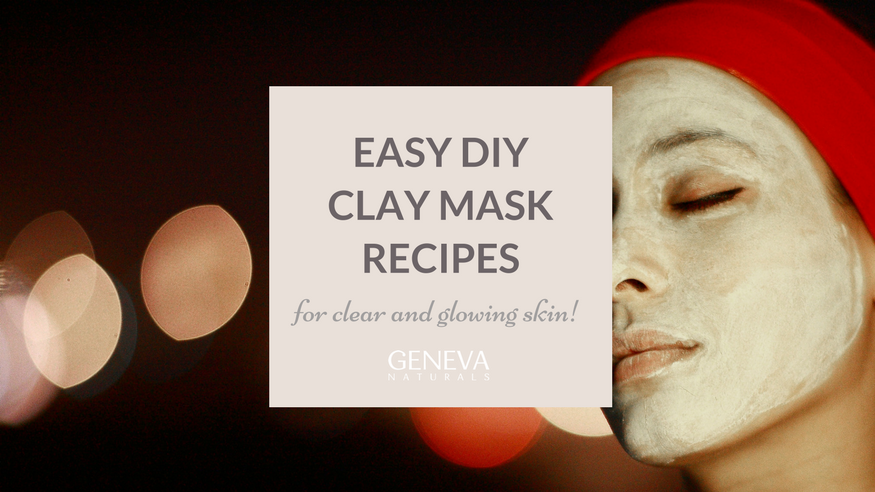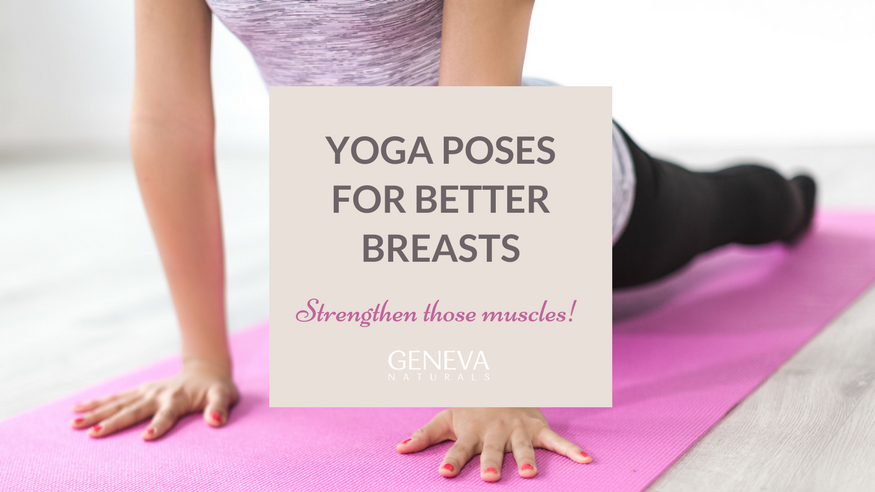Your Skin's "Triangle of Death" Explained


If you've never heard of the “triangle of death”, you’re not alone. It’s a subject in the spotlight recently because of a young woman’s personal experience going viral. But when Katie Wright found out what the triangle of death is the hard way, the subject was thrust into the spotlight of beauty, skin care and medical professionals everywhere.
Not to be confused with the mysterious area of the Atlantic Ocean known as the Bermuda Triangle or an area south of Baghdad recognized for it’s violence in Iraq. While all three triangles seem to be somewhat of a mystery, we’ll break down the triangle of death in reference to your face and tell you what you need to know!
What is the Triangle of Death?
A topic taught in medical schools known as “danger triangle of the face”, it is the area between your eyebrows (top point of the triangle) down to either side of the mouth (bottom side of the triangle). The space in the center of the triangle consists of the sinus cavity. It’s packed full of nerves and blood vessels, all of which carry back towards the brain. If the surface of the skin in that region was to become infected, the infection could potentially spread, become absorbed into the blood and be transported back to the brain. Worst case scenario would be an infection within the cavernous sinus thrombosis leading to blood clots, stroke or even death.
Before you freak out and try to catalogue every time you’ve ever popped a zit in this area and thank the lucky stars it didn’t result in impending doom - it’s uncommon. That being said, it’s something you should still be mindful of to avoid the risks.
Kate Wright
Let's tell the story of Katie Wright and the Triangle of Death. Katie did just like a lot of people would do - she noticed a blemish on her face and decided to pop it. Unfortunately, that is not what happened. After irritating the inflammation, it quickly began to well and hurt! She felt like her skin was going to burst in that area. But what she thought was a pimple turned out not to be that at all, but a serious case of cellulitis (a type of staph infection). Because it was on her face, there was a huge risk for the staph to spread to her brain or eyes and cause her to go blind.
Should you never pop a pimple in that area again?
- Possibly. It’s not as scary as it sounds, but you should know the risks. With antibiotics, most infections don’t really escalate to that level. If you get what looks like a pimple that is bigger than normal and it ends up causing any additional irritation or problems. The possibility is extremely rare, but it has happened, it does happen and it can happen, so be mindful of your skin and seek professional from a dermatologist or doctor when necessary.
- If you’re second guessing yourself, keep this simple rule in mind: Do not pick anything that is in the process of healing or currently inflamed and irritated. Any popping or poking at your skin can lead to bacteria spreading throughout your face; even if the end result isn’t stroke or death, scarring, additional breakouts and redness.
- There are those of us that will throw caution to the wind and do what we do best anyway - pop and pick! If you happen to be one of those choosing to live on the edge, you must do it properly avoid additional irritation and infection or spreading the breakout.
For more discussion on the dangers of popping a pimple in the Triangle of Death, watch this video from The Doctors:
What type of acne do you have?
Whiteheads
This type of blemish is most commonly caused by not exfoliating often enough. The dead skin cells build up on the surface of your skin blocking your pores; the oil inside builds up and rises to the surface of the skin leading to whiteheads.
Hard, red cysts
Hormone related breakouts are generally red, irritated cyst like flare ups. When you get stressed or a hormone change, your skin produces additional oil leading to breakouts. They’re also linked to your menstrual cycle - the excessive oil blocks the hair follicles and generates deep, painful, red pimples.
Treatment
Over the counter treatments
Start with a topical treatment containing salicylic acid or benzoyl peroxide. Introduce it slowly if you have more sensitive skin to avoid irritation or over drying. The treatment works to fight bacteria that cause breakouts. You may also try a cleanser containing salicylic acid. Anytime you feel a new blemish brewing, dab on a little of the spot treatment and be patient.
Prescription topical treatment
If you’re not getting the results you want from the over-the-counter treatment, see your dermatologist or health care professional. Ask them about more intensive treatments or even a high tech remedy like a laser procedure that uses a deep suction to clean the pore and a light pulse killing the bacteria causing the breakouts. This can be an effective way to treat the blemishes and prevent scarring. If it's too late for that, check out these 10 natural ways to get rid of acne scars.
Hormonal prescription
If you’re prone to breakouts related to hormone changes your doctor may prescribe an oral medication that works from the inside out. But some oral medications used to balance hormones can cause birth defects, so do not take it if you plan to become pregnant.
Dairy check
Dairy can cause breakouts, so if you like to enjoy a bowl of ice cream and watch Netflix, maybe skip the ice cream. Also consider dairy free milk or just reduce the amount of milk fat in your diet and see if that makes a difference.
Keep your hands off
But if you just can’t control yourself, be sure to wash your hands thoroughly, dab the area with a little witch hazel to disinfect it and use a cotton swap to apply a dab of antibiotic gel to fight bacteria and also help the skin to heal.
Cover it up
Soak one cotton swab with witch hazel and another with eye drops (anti-inflammatory). Dab the swab with witch hazel on the blemish and follow with the swab soaked in eye drops. After it’s dried, use an oil-free concealer on the pimple. You can use a brush to blend the concealer into your skin. Apply your foundation and if necessary, reapply a coat of concealer and blend. Top it off with a loose, translucent powder.
Prevention

Do you often get acne in this dreaded area? You're not alone - the nose is one of the most common places to get acne. Here are some changes you can make in your every day routine to deal with your acne prone skin.
Clean Your Makeup Brushes
Another important way to prevent breakouts and even more so, bacteria developing on the skin forming dangerous cysts that can lead to future issues and potentially hazardous scenarios, you must clean your makeup brushes regularly!
Cleaning your makeup brushes can seem like an annoying task, but when you consider the benefits – it’s totally worth it! Think of all that make up that accumulates in your brushes over time and can distribute and redistribute bacteria all over the surface of your skin without you even knowing it! So take a look at these 5 effective methods for getting your makeup brushes squeaky clean and choose the one that works best for your lifestyle and budget.
- Good ole’ fashioned soap and water. Not just any old soap will do, however, unless to want to wash your brush bristles fall out, thus your brush fall apart. Use Dawn – yes, the dish soap. It is excellent at breaking down oil, plus it’s an anti-bacterial powerhouse.
- Oh baby! Baby shampoo is gentle enough for the most delicate of creatures, so it will definitely work for your delicate brushes. It also conditions your bristles without leaving them stiff or starchy. Although it doesn’t have the same anti-bacterial benefits as the first option, it’s still an effective alternative.
- A silicone mitt, of course. With new products on the market every day, beauty experts have thought of one more thing – a silicone glove with nubby patches, so you can really scrub-a-dub-dub those brushes. But don’t forget to also wash the glove following each use to remove any lingering bacteria.
- Cleansing balm/bomb. This stuff is fantastic and leaves your brushes feeling soft and clean. It’s definitely a more expensive option, so it’s not a must have. But the mixture between oils and other ingredients depending on which balm you choose, works to remove excess oil and bacteria from your brushes making them ready to use on fresh faced skin.
- Hi-Tech brush cleansing machine. Did someone say hi-tech? Believe it or not there is even a hi-tech option to cleaning your makeup brushes. Although the price tag is enough to scare some consumers away, the ease is unbeatable. You can put up to 6 brushes in at a time in to the slots of the machine and it takes care of the rest. The machine works like your washer by agitating the bristles in soap, then drains. It processes through 2 rinse cycles to get your brushes squeaky clean. Check out this one from Lilumia.
Potentially dangerous facial cysts that can lead to stroke or blindness are definitely not something to be taken lightly, so be careful. So don't forget to clean your brushes! Implement strategies and a skin care routine to maximize your skin’s ability to stay clean and healthy, using our natural anti-aging products:
Try it out!
Also in Geneva Naturals

What Is A Retinoid Oil? Retinoid Oil Benefits, Uses, Effects & More

DIY Clay Mask Recipes for Clear Skin




